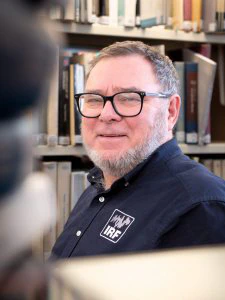
Space scientists in Kiruna will use sounding rocket to create colorful clouds for aurora studies
Auroral scientists at the Swedish Institute of Space Physics (IRF) in Kiruna are planning, with the help of SSC, to launch a sounding rocket from Esrange Space Center between 12-22 March 2023 with the aim of studying conditions in near-Earth space. The experiment will create unusual and beautiful light phenomenon.
“To succeed in the scientific experiment, IRF will use techniques similar to that found in fireworks, which the sounding rocket will activate when it is at an altitude of over 100 kilometers ”, says IRF scientist Tima Sergienko, who is Principal Investigator of the experiment.
The activation will occur in space closest to the Earth, the ionosphere, creating beautiful light phenomena that will be studied with a unique network of advanced optical imaging stations in the Kiruna-area.
“The network, called ALIS_4D, is capable of imaging single colours of the light phenomena and reconstruct these in three dimensions “, says Urban Brändström, Head of IRFs observatory and responsible for ALIS_4D.
The data from the experiment will be used by IRF scientists in Kiruna to study conditions in near-Earth space which is an important piece of the aurora research puzzle that can enable better forecasts for space weather. Space weather is about how the sun’s activity and its solar wind of charged particles affect critical infrastructure on Earth and on satellites.
“We are excited to have developed this sounding rocket experiment for IRF and their research and to launch it into space. SSC has a long history of conducting aurora research missions at Esrange, dating all the way back to the 70’s. Thanks to the technological developments in recent years, we can now break old ground to help us understand more about northern lights ”, says Krister Sjölander, Vice President Science Services and Head of Payloads & Flight Systems at SSC.
Light phenomenon from the rocket experiment will be visible in the evening about an hour after sunset. Feel free to take pictures and share your pictures, as well as the place you took the pictures from, on social media. #brorkiruna
Follow us and the countdown to the launch from Esrange on Twitter @IRF_Space and Facebook @irfspace.
Clear skies and minimal wind are required for a successful scientific experiment.
Similar scientific experiments for aurora studies have been done by, for example, NASA from the Norwegian space base on Andøya. Northern lights cameras in Abisko captured the colorful clouds.
This mission is funded by SNSA, within the Swedish national balloon and rocket program, where Swedish science community is offered the opportunity to do research in space from Esrange.
More information
IRF’s space scientists answer questions about the scientific experiment
Contact:
Johan Kero, Head of the research program Solar, Space and Atmospheric Research, Swedish Institute of Space Physics
+46 980 790 84, johan.kero@irf.se
Press contact:
Annelie Klint Nilsson, Information officer, Swedish Institute of Space Physics
+ 46 980 790 76, annelie.klint-nilsson@irf.se
Martin Eriksson, Information officer, Swedish Institute of Space Physics
+ 46 980 791 78, martin.eriksson@irf.se
Caption:
*Similar scientific experiments for aurora studies have been done by NASA from the Norwegian space base on Andøya. Northern lights cameras in Abisko captured the colorful clouds.
- Photo: Lights over Lapland


